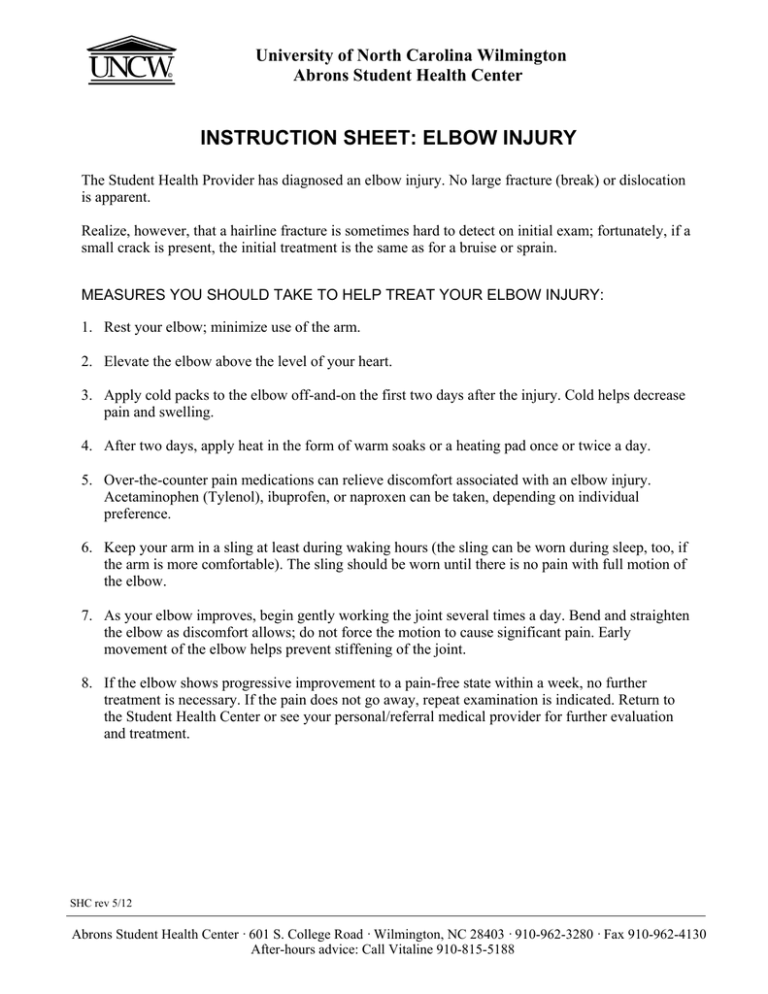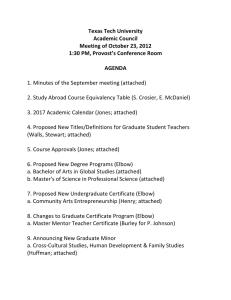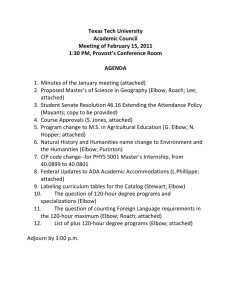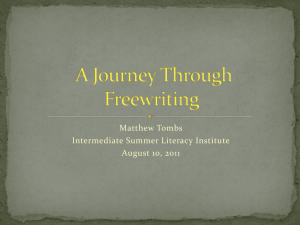INSTRUCTION SHEET: ELBOW INJURY University of North Carolina Wilmington
advertisement

University of North Carolina Wilmington Abrons Student Health Center INSTRUCTION SHEET: ELBOW INJURY The Student Health Provider has diagnosed an elbow injury. No large fracture (break) or dislocation is apparent. Realize, however, that a hairline fracture is sometimes hard to detect on initial exam; fortunately, if a small crack is present, the initial treatment is the same as for a bruise or sprain. MEASURES YOU SHOULD TAKE TO HELP TREAT YOUR ELBOW INJURY: 1. Rest your elbow; minimize use of the arm. 2. Elevate the elbow above the level of your heart. 3. Apply cold packs to the elbow off-and-on the first two days after the injury. Cold helps decrease pain and swelling. 4. After two days, apply heat in the form of warm soaks or a heating pad once or twice a day. 5. Over-the-counter pain medications can relieve discomfort associated with an elbow injury. Acetaminophen (Tylenol), ibuprofen, or naproxen can be taken, depending on individual preference. 6. Keep your arm in a sling at least during waking hours (the sling can be worn during sleep, too, if the arm is more comfortable). The sling should be worn until there is no pain with full motion of the elbow. 7. As your elbow improves, begin gently working the joint several times a day. Bend and straighten the elbow as discomfort allows; do not force the motion to cause significant pain. Early movement of the elbow helps prevent stiffening of the joint. 8. If the elbow shows progressive improvement to a pain-free state within a week, no further treatment is necessary. If the pain does not go away, repeat examination is indicated. Return to the Student Health Center or see your personal/referral medical provider for further evaluation and treatment. SHC rev 5/12 Abrons Student Health Center · 601 S. College Road · Wilmington, NC 28403 · 910-962-3280 · Fax 910-962-4130 After-hours advice: Call Vitaline 910-815-5188



